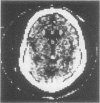Abstract
Computerized tomography was used to evaluate 35 patients with senile dementia and proved to be a simple and practical screening procedure. Those patients with moderate or severe cerebral atrophy had a poorer short-term prognosis than those with questionable or mild atrophy. Two patients with potentially treatable illnesses (hypothyroidism and pernicious anaemia) and only questionable atrophy had reversal of the dementia with treatment. A single patient with moderate atrophy had a potentially treatable illness (hypothyroidism) which only partially resolved. Those patients with dementia but relatively little atrophy by computerized tomography may represent a unique group with a better prognosis who require particularly careful evaluation for potentially treatable illnesses.
Full text
PDF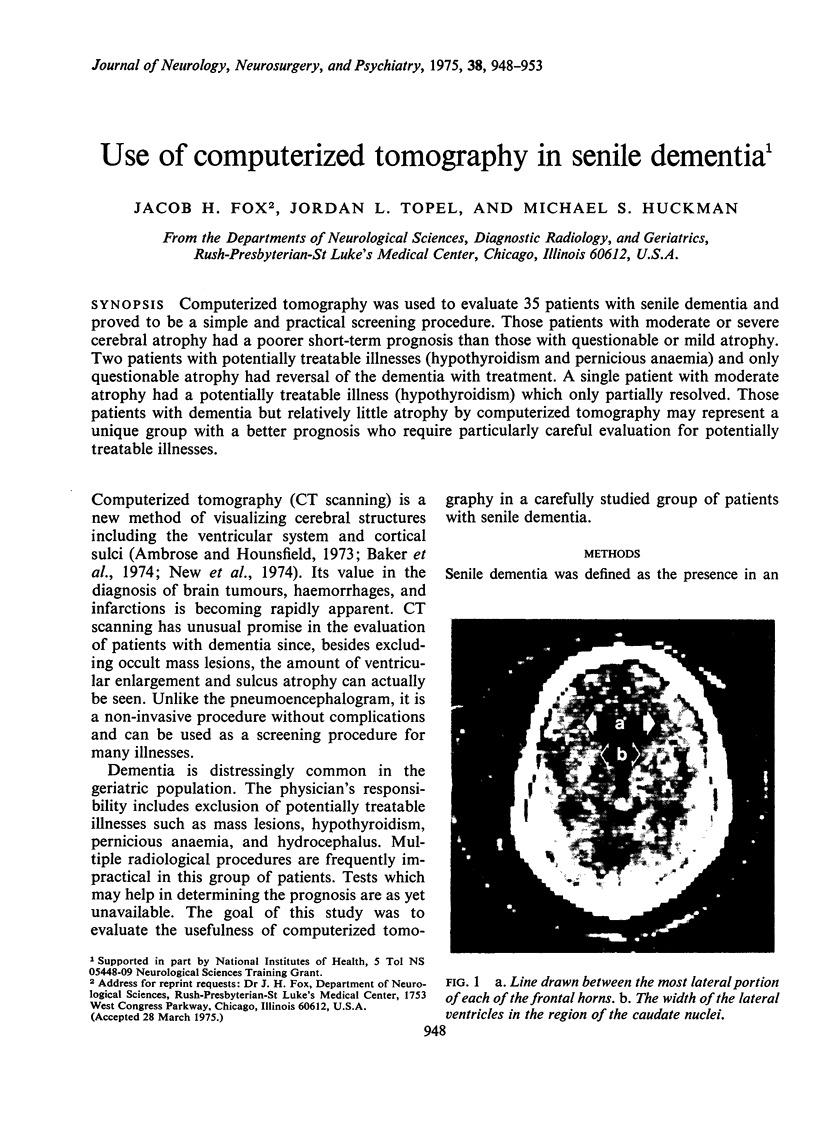
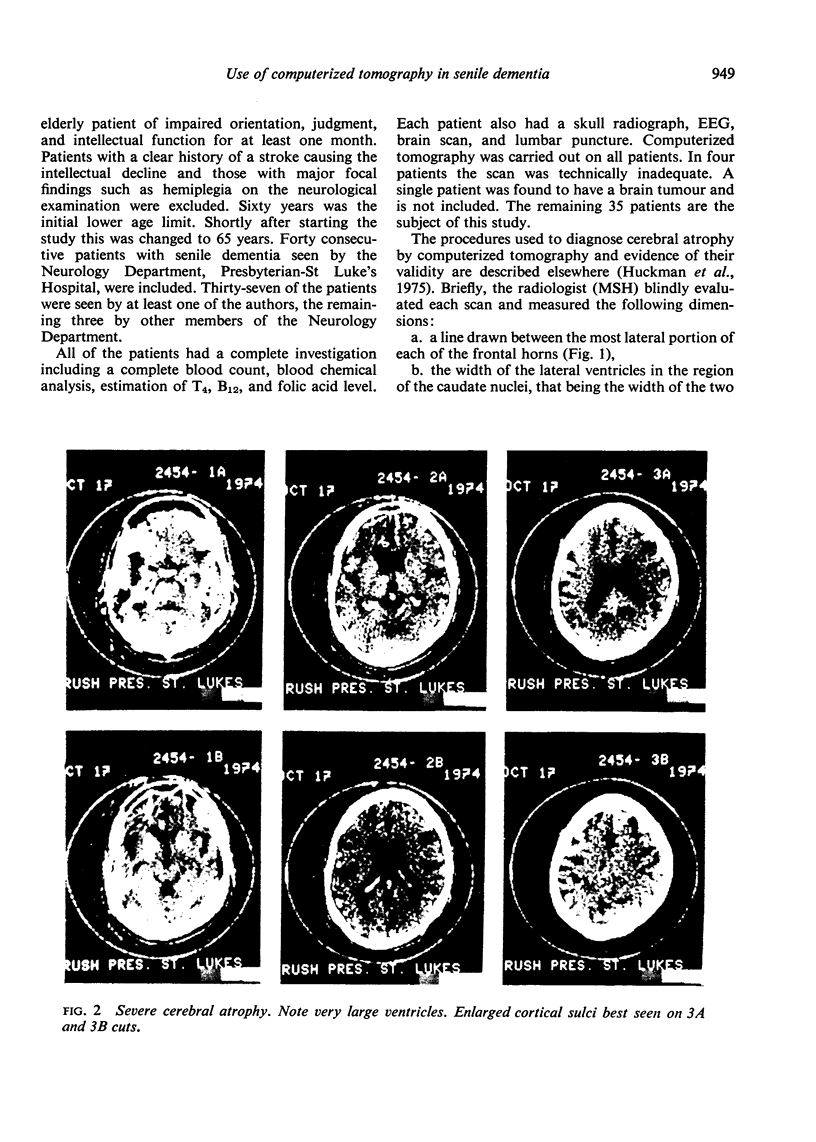
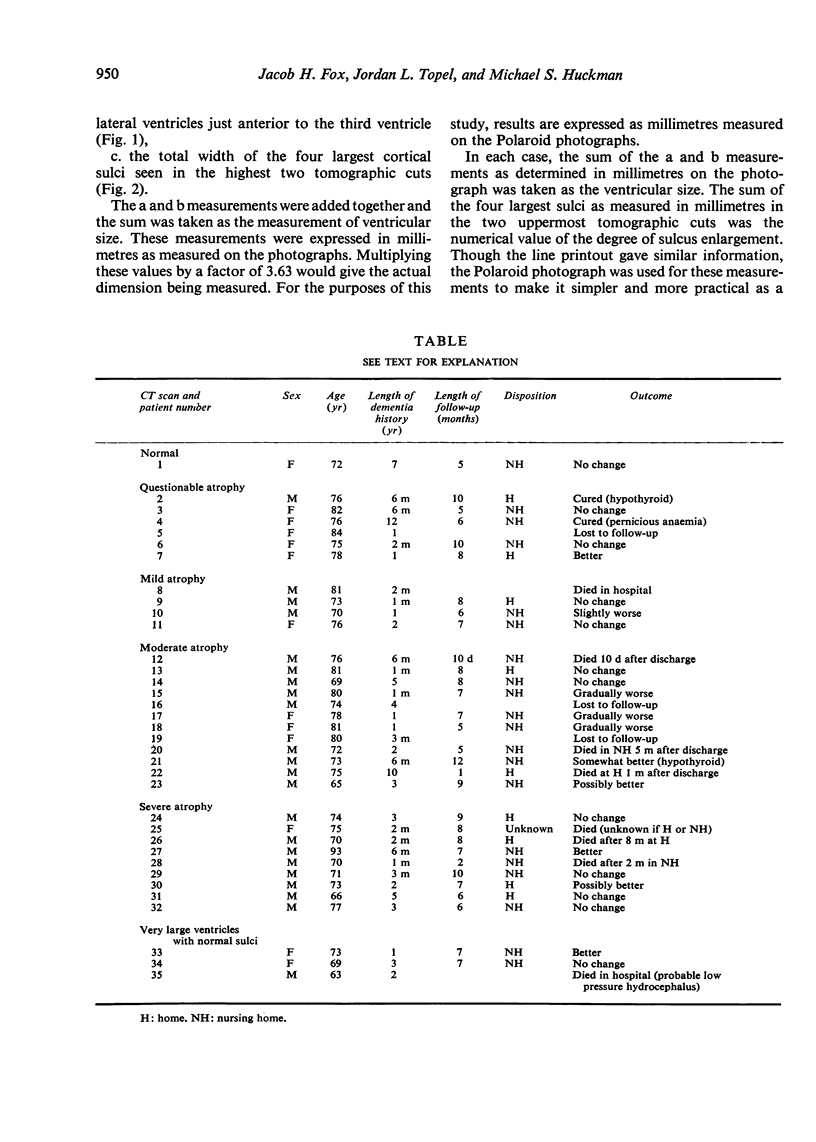
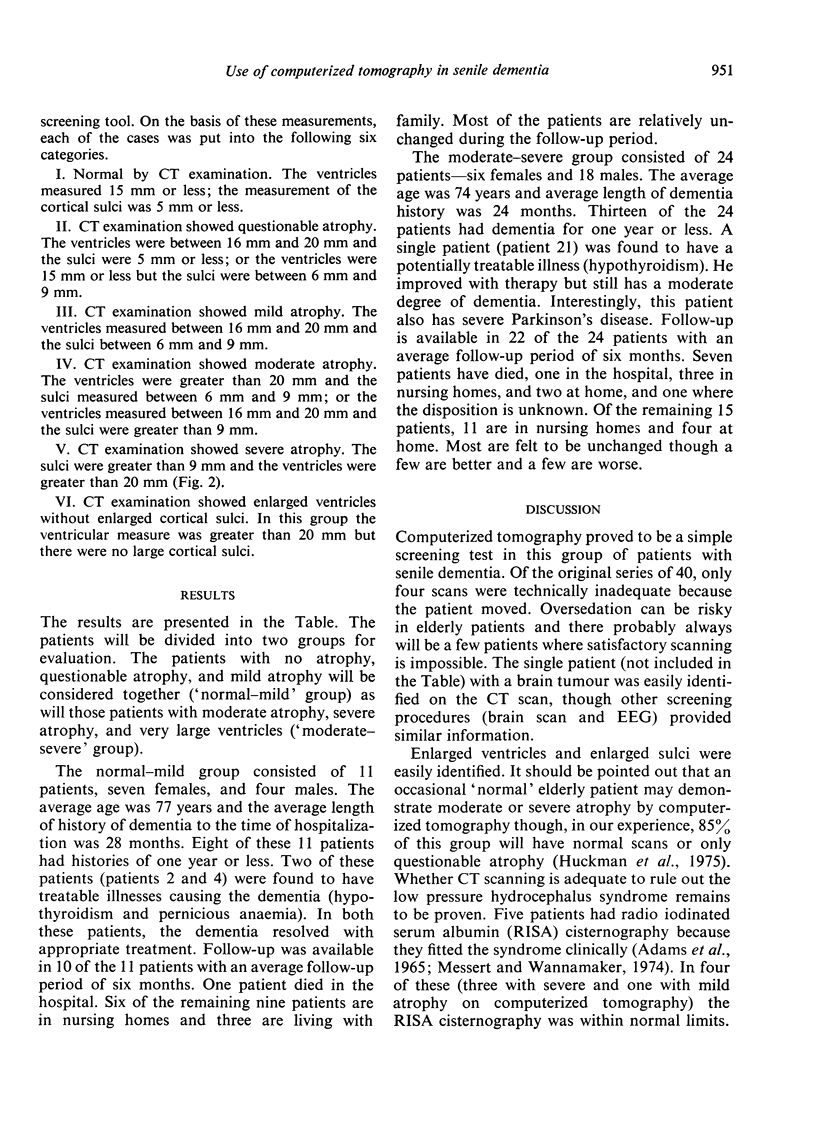
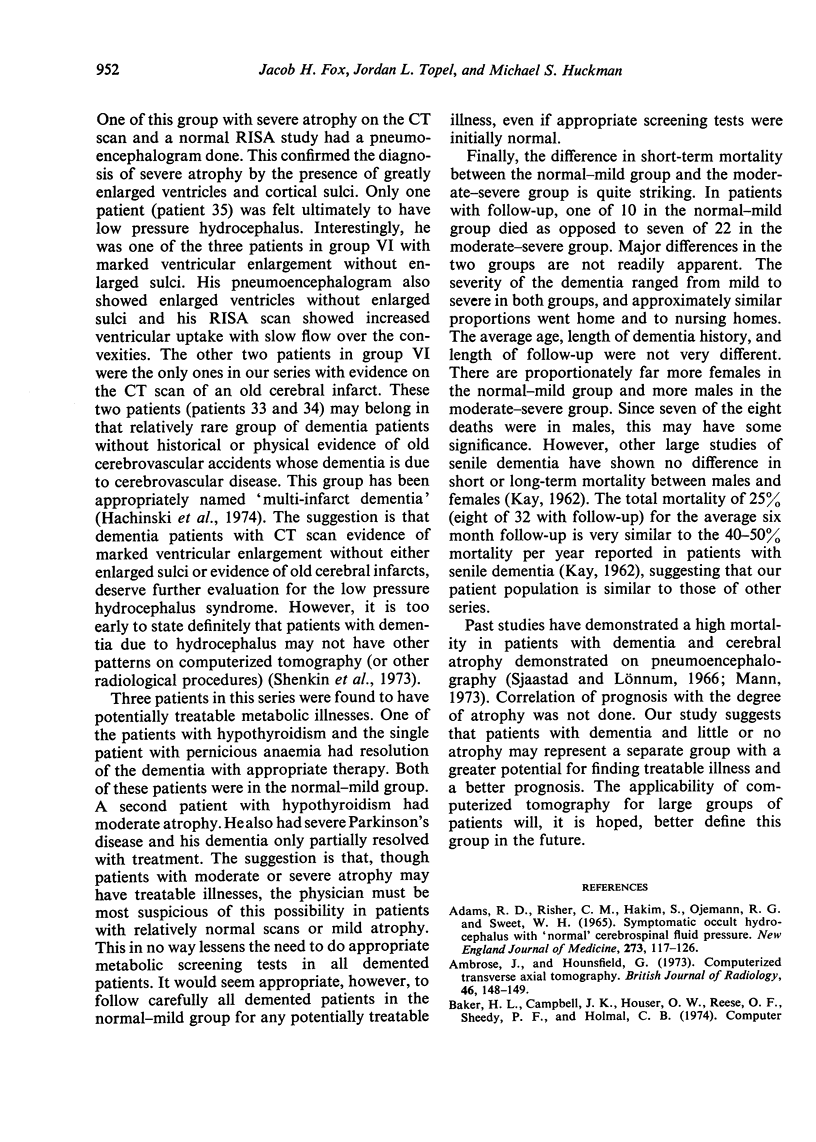
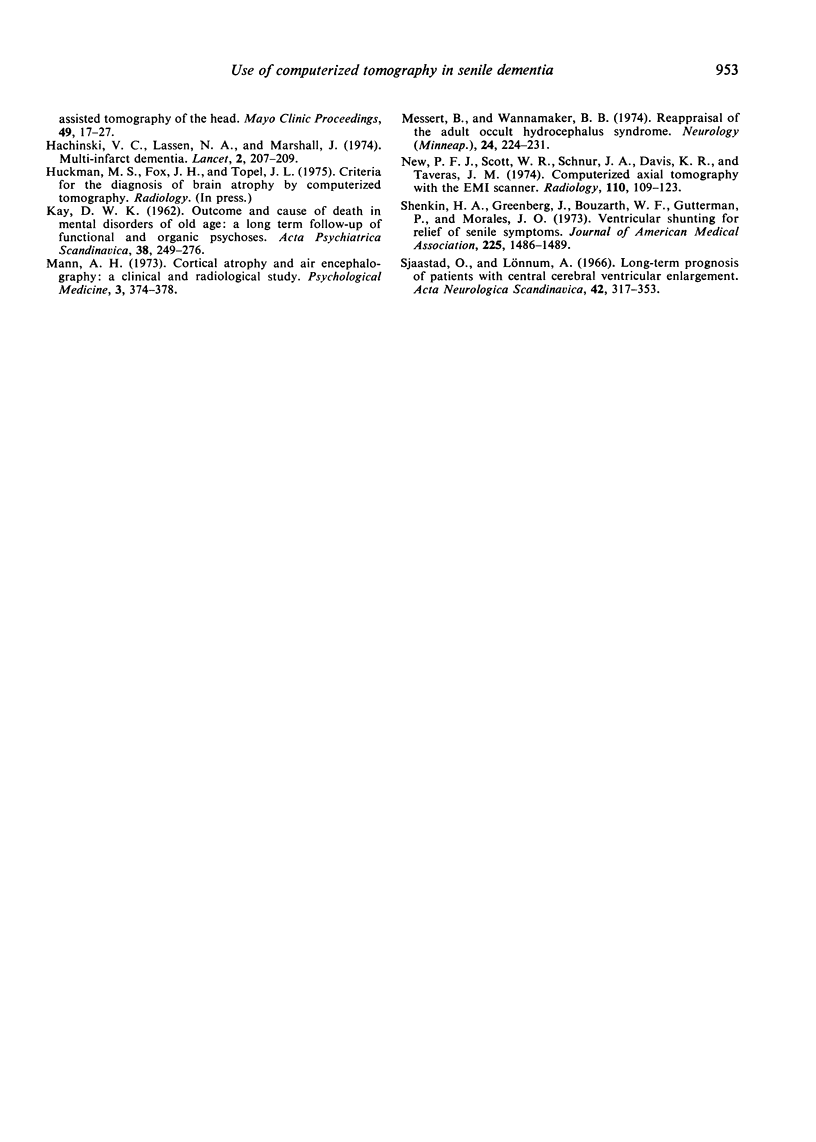
Images in this article
Selected References
These references are in PubMed. This may not be the complete list of references from this article.
- ADAMS R. D., FISHER C. M., HAKIM S., OJEMANN R. G., SWEET W. H. SYMPTOMATIC OCCULT HYDROCEPHALUS WITH "NORMAL" CEREBROSPINAL-FLUID PRESSURE.A TREATABLE SYNDROME. N Engl J Med. 1965 Jul 15;273:117–126. doi: 10.1056/NEJM196507152730301. [DOI] [PubMed] [Google Scholar]
- Ambrose J., Hounsfield G. Computerized transverse axial tomography. Br J Radiol. 1973 Feb;46(542):148–149. [PubMed] [Google Scholar]
- Baker H. L., Jr, Campbell J. K., Houser O. W., Reese D. F., Sheedy P. F., Holman C. B. Computer assisted tomography of the head. An early evaluation. Mayo Clin Proc. 1974 Jan;49(1):17–27. [PubMed] [Google Scholar]
- Hachinski V. C., Lassen N. A., Marshall J. Multi-infarct dementia. A cause of mental deterioration in the elderly. Lancet. 1974 Jul 27;2(7874):207–210. doi: 10.1016/s0140-6736(74)91496-2. [DOI] [PubMed] [Google Scholar]
- Mann A. H. Cortical atrophy and air encephalography: a clinical and radiological study. Psychol Med. 1973 Aug;3(3):374–378. doi: 10.1017/s0033291700049679. [DOI] [PubMed] [Google Scholar]
- Messert B., Wannamaker B. B. Reappraisal of the adult occult hydrocephalus syndrome. Neurology. 1974 Mar;24(3):224–231. doi: 10.1212/wnl.24.3.224. [DOI] [PubMed] [Google Scholar]
- New P. F., Scott W. R., Schnur J. A., Davis K. R., Taveras J. M. Computerized axial tomography with the EMI scanner. Radiology. 1974 Jan;110(1):109–123. doi: 10.1148/110.1.109. [DOI] [PubMed] [Google Scholar]
- Shenkin H. A., Greenberg J., Bouzarth W. F., Gutterman P., Morales J. O. Ventricular shunting for relief of senile symptoms. JAMA. 1973 Sep 17;225(12):1486–1489. [PubMed] [Google Scholar]
- Sjaastad O., Lönnum A. Long-term prognosis of patients with central cerebral ventricular enlargement. A follow-up study of 100 patients, with repeated pneumoencephalographic examinations in 39 cases. Acta Neurol Scand. 1966;42(3):317–353. [PubMed] [Google Scholar]



